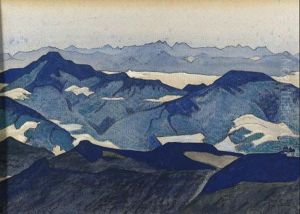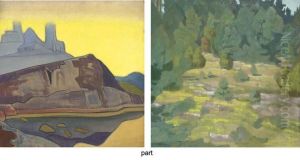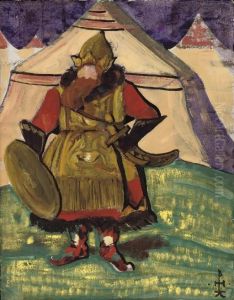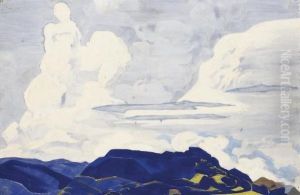Nikolai Konstantinovich Rerikh Paintings
Nikolai Konstantinovich Roerich, also known as Nicholas Roerich, was a multifaceted Russian artist, writer, archaeologist, theosophist, philosopher, and public figure, who left an indelible mark on the world of art, culture, and spirituality. Born in Saint Petersburg, Russia, on October 9, 1874, into an intellectual and artistic family, Roerich was exposed to the rich cultural heritage of his homeland from an early age. His early education was filled with the arts, history, and archaeology, shaping his diverse interests that would later manifest in his extensive body of work. He pursued legal studies at the University of Saint Petersburg, but his passion for art led him to simultaneously enroll at the Imperial Academy of Arts, where he studied under prominent artists of the time.
Roerich's artistic style evolved throughout his career, initially influenced by Russian symbolism and later incorporating elements of Art Nouveau. However, his work is best known for its incorporation of mystical and spiritual themes, often inspired by his travels in Russia and beyond. Roerich’s fascination with ancient cultures, spirituality, and theosophy deeply influenced his paintings, which are characterized by vibrant colors, dramatic landscapes, and ethereal subjects, aiming to convey profound spiritual messages. He was not only a painter but also a stage designer, collaborating with composer Igor Stravinsky and ballet impresario Sergei Diaghilev on the groundbreaking ballet 'The Rite of Spring.'
Beyond his artistic endeavors, Roerich was a passionate advocate for cultural preservation. He initiated the Roerich Pact, a treaty among nations to protect cultural heritage, advocating for the protection of cultural artifacts and monuments during times of war and peace. This led to the establishment of the Banner of Peace symbol, which was used to mark protected sites. Roerich's commitment to culture, peace, and spirituality also led him to establish the Agni Yoga Society, together with his wife Helena Roerich, focusing on spiritual teachings and practices.
Roerich's later years were spent in India, where he continued his artistic and spiritual work until his death in Kullu, Himachal Pradesh, on December 13, 1947. His legacy lives on through his vast oeuvre of paintings, writings, and the institutions he founded, which continue to inspire and influence artists, thinkers, and spiritual seekers around the world. Roerich's work and life philosophy were a testament to his belief in the power of art and spirituality to bring about cultural understanding and peace among nations.



